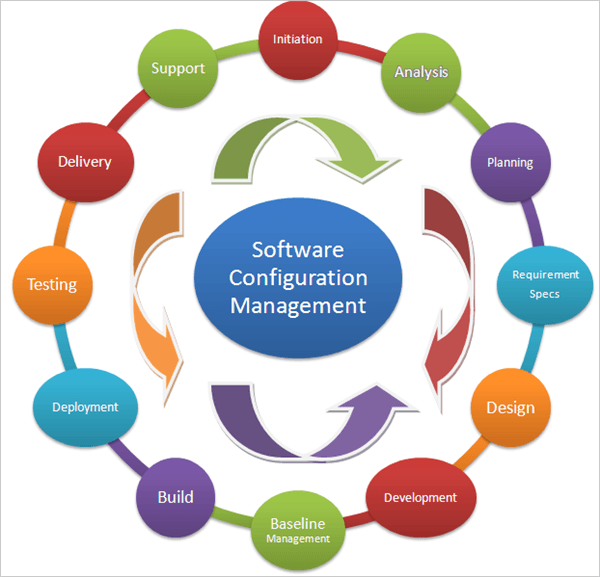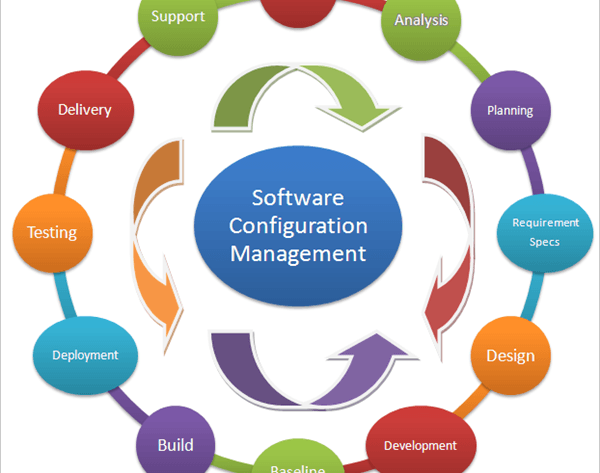
Configuration management is essential as it can help you to manage every part of the business. The workflow for designing and manufacturing, how your service team deals with all the customer issues, and the process of how the IT department follows implementing the software, can all be managed when you have an effective and structured methodology to document, validate, release, and change the requirements in your business.
Maintaining your business software is a full-time job. Updates issued by the platform, changes to your internal configuration, and additions to software and hardware can all lead to unexpected issues behind the scenes and for the end-user experience. Many risks can appear as a result of not knowing how to manage configuration software changes into your business that might put your business in danger. In order to effectively manage change in your business software, keep in mind the following three aspects of configuration management.
Testing Planned Configuration Changed
With the rollout of 5G across the nation, more businesses are moving their business to platforms that take advantage of the speed and agility of the fifth-generation network. When you introduce broad changes to your system and platforms, look to automated testing tools to make sure the change is smooth without negative downstream consequences. Automated testing reduces errors that manual testing can introduce, saving you money and allowing you to introduce the new software more quickly.
Monitoring Configuration Changes
There are many instances of performance issues that are caused by not a correctly configured network or a server. Human errors during updates may cause unexpected degradation and misconfigurations can have a negative impact on the whole process and performance.
To establish your system parameters and maintain them over time it’s necessary to monitor performance. This process establishes baselines for the computer systems and servers as well as the configuration of system resources. It then continuously verifies that the system continues to meet those parameters. Part of that is physically checking your hardware setup, but a lot can be automated.
Use configuration management software to automate this process as well. Monitoring will track your system so that if there is an issue it will quickly be apparent where the root cause of the problem lies and repair can be handled swiftly.
Managing Configuration Changes
While monitoring is part of configuration management, configuration management is a larger concept than just monitoring the system. It also involves installing updates promptly and creating changes to the system design that won’t negatively impact your downstream users. Configuration management tools are not exactly the same as any generic automation tool because of idempotency.
A non-idempotent script in automated software could run the same code over and over, creating a mess of a log and possibly crashing the system. Configuration management software is already programmed to be idempotent, creating the same result and running an entry only one time regardless of how many times you run the client.
Because your configuration management software maintains an image of your system configuration it means that if the worst happens and you lose your system, it is easy to do disaster recovery. Likewise, if an update has unforeseen consequences, you can easily roll the system back.
Benefits of Automating Your Configuration Management
Automating as much of your system management as possible has several benefits. First, it allows you to have a much larger system than you could manage with all manual monitoring and configuration. Next, it saves you money by preventing errors. More importantly, managing your system significantly reduces your risk of cyber attacks by making sure that all of your software is up-to-date and isn’t running with known security risks.
Being current and monitoring the system will also decrease the likelihood that your system will crash, costing you many hours of productivity and potentially lost sales. If there is instability, your automation software has the potential to alert you before there are any consequences at all.
Knowing your system top-to-bottom will avoid investing in duplicate software or hardware. Configuration management tools can create reports and look at trends with the help of a database to track changes.
Finally, today’s computing environment for business is all about scalability and agility. Whether or not you are using edge computing, your business, like most others is increasingly reliant on modular programming for scalability. Configuration management is another tool in your scalability toolbox. When you already know the state of your system you’ll easily be able to add to it with some script and the push of a button.
You’ve moved your business software platforms to the cloud. Make sure all your updates are doing the most for your business by testing, monitoring and managing your system configuration with automation tools that will keep your business up and running no matter what changes you implement.

